Home >Common Problem >There are several views in powerpoint
There are several views in powerpoint
- 藏色散人Original
- 2020-02-10 13:27:1067794browse

How many views do powerpoint have?
The main types of views are: slide view, outline view, slide browse view, normal view, slide show view and notes page view.
1. Slide view
In this mode, you can add text and clipart to the slides one by one, and arrange and format the content of the slides. To switch to slide view, click the Slide View button. You can view the entire slide, or change the display ratio to enlarge a portion of the slide for detailed modifications. Only one slide can be edited at a time in this view.
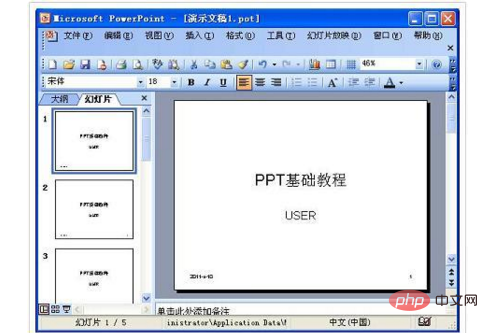
2. Outline view
It allows us to see the main content of each slide in the entire layout, and also allows us to work directly on it Formatting and editing. The main thing is that the main ideas of the entire presentation can be viewed in outline view, and new outline files can be inserted. Only the slide title and main text information is displayed.
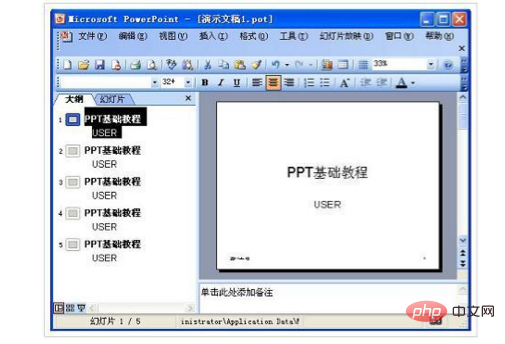
3. Slide Browse View
Use the Slide Browse View to display the slides sequentially in the window in the form of several slide thumbnails per row. slides, so that users can delete, copy and move multiple slides at the same time, and locate a certain slide quickly and easily. In addition, it is also convenient to define the switching method of slides here. You can see multiple slides in a presentation in a window at the same time.
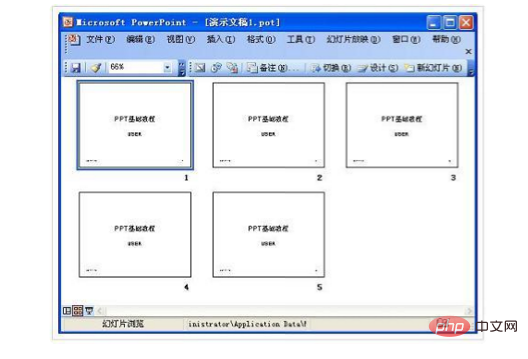
4. Normal view
In this view, you can enter and view the topic, subtitle and notes of each slide, and you can move the slide Frame images and notes pages, or change their size. It is also the default view of Powerpoint 2003. Contains outline pane, slide pane, and notes pane.
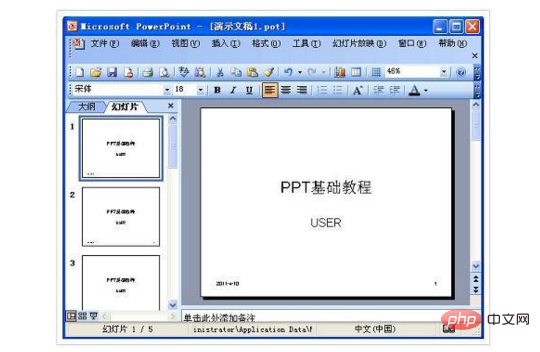
5. Slide show view
In this view, start the show from the current slide, directly observe the visual and auditory effects in the show, and experiment Screen the manipulation process to facilitate timely modifications. That is, the computer full-screen projection mode of the presentation.
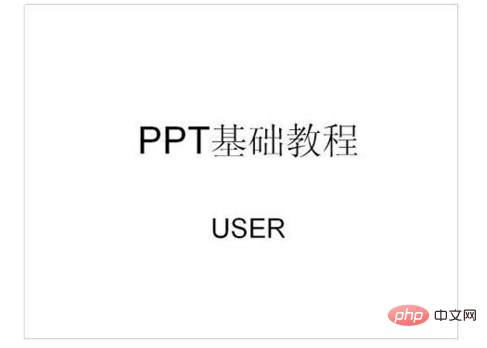
6. Remarks page view
is specially used to edit and modify the remark page.
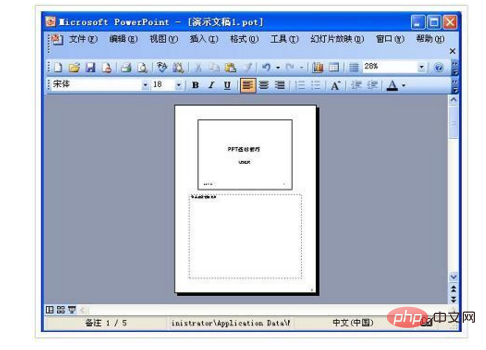
The above is the detailed content of There are several views in powerpoint. For more information, please follow other related articles on the PHP Chinese website!

